Path of Taste: Orvieto and the Amerini Hills
A large area in which the following are itineraries and routes of taste, art and history. Orvieto, a city of Etruscan origins perched high on a volcanic outcrop, where stands the magnificent millennial Cathedral, a reference point for this itinerary thanks to the city’s proximity to the train station (Rome-Florence) and the exit of the A1 motorway. In addition to Orvieto, towns rich in history and monuments worth visiting are Narni, Amelia and the modern Terni. Terni is the provincial capital with beautiful waterfalls just outside the city. The territory of Orvieto and Amelia are both known for wine production and are connected to each other by Strada dell’olio di oliva Umbria DOP. The olive tree is one of the most fertile crops spread across these hills of Umbria.
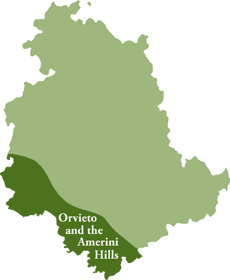
How to get here:
Car: Autostrada A1 exits Orvieto, Fabro, Orte, Attigliano
Car: Strada statale Cassia 71
Train stations: Orvieto, Orte
PLACES TO VISIT
Amelia, Terni and its territory
 The southern most part of Umbria coincides with the province of Terni and the presence of the modern capital city. Terni, is the main town of a territory from Orvieto to the south and south-east along the path are a series of small villages, some of which are particularly worth visiting. The area of the Amerini hills has towns like Amelia, Lugano, and Giove. Amelia is of ancient origin, as evidenced by the massive walls that enclose the old town, this town in the Umbrian hillside, is characterized by the streets and internal roads still intact as well as the access doors. In the village center are some beautiful Renaissance buildings, including Petrignani Palace, Palace Naccarato, Farrattini Palace, Palace and Palace Boccarini Clementine. There are also numerous churches, including the Cathedral Basilica, with the adjacent tower dodecagonal (year 1000 ca.) and other religious buildings such as the church of St. Augustine and the church of San Francesco. Worth mentioning in the center of the countryside is the interesting Civic Museum and Roman cisterns. Just outside the village, there is the “Rio Grande River Park” with the old dam that creates a lovely stretch of water known as lake Vecchio.
The southern most part of Umbria coincides with the province of Terni and the presence of the modern capital city. Terni, is the main town of a territory from Orvieto to the south and south-east along the path are a series of small villages, some of which are particularly worth visiting. The area of the Amerini hills has towns like Amelia, Lugano, and Giove. Amelia is of ancient origin, as evidenced by the massive walls that enclose the old town, this town in the Umbrian hillside, is characterized by the streets and internal roads still intact as well as the access doors. In the village center are some beautiful Renaissance buildings, including Petrignani Palace, Palace Naccarato, Farrattini Palace, Palace and Palace Boccarini Clementine. There are also numerous churches, including the Cathedral Basilica, with the adjacent tower dodecagonal (year 1000 ca.) and other religious buildings such as the church of St. Augustine and the church of San Francesco. Worth mentioning in the center of the countryside is the interesting Civic Museum and Roman cisterns. Just outside the village, there is the “Rio Grande River Park” with the old dam that creates a lovely stretch of water known as lake Vecchio.
 Lugnano has the beautiful Collegiate Church of Santa Maria, a small jewel of Romanesque art that together with the other churches of St. Chiara and Santa Maria are among the most significant religious buildings.
Lugnano has the beautiful Collegiate Church of Santa Maria, a small jewel of Romanesque art that together with the other churches of St. Chiara and Santa Maria are among the most significant religious buildings.
Continuing sound Narni is a pretty town with two faces, the first more modern and industrial, and the second the oldest part of which offers many attractions. In particular, the historical center of the town boasts charming views, rich in history and monuments such as the cathedral of San Giovenale, the town hall, Palazzo dei Priori. Other attractions offered by the city of Narni is the path “Narni Underground“, the ancient Rocca Albornoz, the Abbey of San Cassiano and the ancient Roman bridge of Augustus. From the Roman era, in the municipality of Narni is the interesting area with the remains of the shipyard Stifone adjacent to the Nera river.
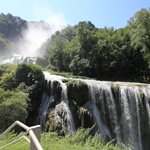 A few kilometers passed Narni you will reach Terni, the modern and dynamic provincial capital. It is a city of many aspects that combines modernity and its a fairly industrialized center with live elements of history and nature. The historic center has collected and has in the main street Corso Tacitus. Among the most significant noble palaces, Palazzo Spada, Palazzo Fabrizi (museum), Palazzo Bianchini, the latter near the Cathedral. Among the churches are San Pietro, San Salvatore, San Francesco, and the famous basilica of San Valentino. Related to Valentine’s Day are also important food and wine events such as Cioccolentino and “Umbriaforwinelovers” dedicated to the wines of San Valentino. Just outside Terni worth a visit is the archaeological site of Carsulae near the village of San Gemini then, the Marmore water falls and the Piediluco lake.
A few kilometers passed Narni you will reach Terni, the modern and dynamic provincial capital. It is a city of many aspects that combines modernity and its a fairly industrialized center with live elements of history and nature. The historic center has collected and has in the main street Corso Tacitus. Among the most significant noble palaces, Palazzo Spada, Palazzo Fabrizi (museum), Palazzo Bianchini, the latter near the Cathedral. Among the churches are San Pietro, San Salvatore, San Francesco, and the famous basilica of San Valentino. Related to Valentine’s Day are also important food and wine events such as Cioccolentino and “Umbriaforwinelovers” dedicated to the wines of San Valentino. Just outside Terni worth a visit is the archaeological site of Carsulae near the village of San Gemini then, the Marmore water falls and the Piediluco lake.
Orvieto and its territory
 A vast area bordering southern Tuscany and northern Lazio. The city of Orvieto is the main place of interest thanks to its remarkable art and cultural heritage represented primarily by the magnificent Duomo and the great Etruscan ruins. There is also the Palazzo del Popolo, the Pozzo (Well) di San Patrizio and Pozzo della Cava, the medieval quarter with numerous churches and palaces and fascinating journey through Orvieto Underground. The city is also the chosen location of many major events, as well as headquarters of Città Slow and hosts major food events, Orvieto con Gusto, Orvieto Food Festival and I Gelati d’Italia. The medieval quarter hosts Palazzo del Gusto and the regional Enoteca.
A vast area bordering southern Tuscany and northern Lazio. The city of Orvieto is the main place of interest thanks to its remarkable art and cultural heritage represented primarily by the magnificent Duomo and the great Etruscan ruins. There is also the Palazzo del Popolo, the Pozzo (Well) di San Patrizio and Pozzo della Cava, the medieval quarter with numerous churches and palaces and fascinating journey through Orvieto Underground. The city is also the chosen location of many major events, as well as headquarters of Città Slow and hosts major food events, Orvieto con Gusto, Orvieto Food Festival and I Gelati d’Italia. The medieval quarter hosts Palazzo del Gusto and the regional Enoteca.
 North of Orvieto is an area marked by the presence of large green wooded areas with small villages surrounded by a succession of pristine green hills from where they emerge, beautiful places like The Convent of Scarzuola close Montegabbione and Villa Cahen in the park Selva di Meana in the town of Allerona. On the east side of Orvieto is another wooded area, the forest Elmo that leads to the summit of Mount Peglia. Continuing north leads to San Venanzo a small town characterized by the presence of the park and volcanological museum.
North of Orvieto is an area marked by the presence of large green wooded areas with small villages surrounded by a succession of pristine green hills from where they emerge, beautiful places like The Convent of Scarzuola close Montegabbione and Villa Cahen in the park Selva di Meana in the town of Allerona. On the east side of Orvieto is another wooded area, the forest Elmo that leads to the summit of Mount Peglia. Continuing north leads to San Venanzo a small town characterized by the presence of the park and volcanological museum.
 The Corbara lake has always been known for its fishing, and is loacted in the Tiber River Park, an area rich in natural attractions such as the gorge of Prodo (canyoning) and the grotta (cave) dei Pozzi della Piana. The lake gives its name to the wine (DOC Lago di Corbara) produced in the hills surrounding it.
The Corbara lake has always been known for its fishing, and is loacted in the Tiber River Park, an area rich in natural attractions such as the gorge of Prodo (canyoning) and the grotta (cave) dei Pozzi della Piana. The lake gives its name to the wine (DOC Lago di Corbara) produced in the hills surrounding it.
Moving south before reaching the Amerini hills is the village of Montecchio which has an olive oil museum, Museo dell’Olio di Oliva.
LOCAL WINES
DOC “Orvieto”
This Umbrian wine is produced mainly in South Eastern area of Orvieto and its territory. It got its name in 1971 and today is one of the best known wines of the region. A wine obtained from Trebbiano Procanico and Grechetto. The designation of origin “Orvieto” also includes Orvieto Classico and is reserved for white wines of different types: secco, abboccato, amabile, dolce, superior, vendemia tardiva and muffa nobile.
DOC “Rosso Orvietano”
A red wine whose designation of origin is newer than the white, designated in 1998. It is a red wine that can be paired with various types of food, and is produced in the territory of Orvieto. It is made from the following varietals: Cabernet, Cabernet Franc, Cabernet Sauvignon, Canaiolo, Ciliegiolo, Merlot, Pinot Noir, Sangiovese, Aleatico.
DOC “Lago di Corbara”
The “Lago di Corbara” was DOC certified in 1998, and is reserved for red and white wines that meet the conditions and requirements established by the product specification for the following types: Red, Red Reserve, Cabernet Sauvignon, Cabernet sauvignon reserve, Merlot reserve Merlot, Pinot Noir, Pinot noir reserve; Sangiovese, Sangiovese Reserve, white, white reserve, Grechetto, Grechetto reserve, Vermentino Vermentino Reserve, Chardonnay, Chardonnay Reserve, Sauvignon, Sauvignon Reserve, Vendemmia Tardiva, Passito and Passito Reserve.
DOC “Amelia”
A designation acquired in 1989 which was formerly “Colli Amerini DOC” this wine is produced in the southern part of Umbria and is produced as: White, Red, Red Reserve, Grechetto, Ciliegiolo, Ciliegiolo Reserve, Rosato, Novello, Malvasia, Merlot and Merlot Reserve, Sangiovese, Sangiovese Reserve.
IGT “Allerona”
Province of Terni, white wine in the standard typologies; sparkling, sweet and young. Rosé wine in the standard typologies; sparkling and novello. Red wine in the standard typologies; sparkling, sweet and novello.
IGT “Narni”
Province of Terni, white wine in the standard typologies, and sparkling wine. Rosè in the standard typologies and novello. Red wine in the standard typologies, sweet and novello.
WINERIES
Wineries Orvieto and the Amerini Hills
The best wineries in the western area of Umbria, in production are famous wines such as Orvieto Classico DOC, “Lago di Corbara” and “Amelia” DOC, and “Narni” and “Allerona” IGT. There are numerous wineries in this area, small and large producers who offer tastings and vineyard tours.
LOCAL PRODUCTS
Extra Virgin Olive Oil DOP – Colli Orvietani & Colli Amerini
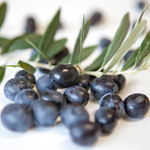 The Colli Orvieto olive oil is from an extensive subarea of Umbria and which is obtained from the three main varieties; Moraiolo, Frantoio and Leccino. It is widely used in cooking and as a main condiment, especially used raw.
The Colli Orvieto olive oil is from an extensive subarea of Umbria and which is obtained from the three main varieties; Moraiolo, Frantoio and Leccino. It is widely used in cooking and as a main condiment, especially used raw.
Another popular subarea is on the Teramo side of the Colli Amerini. In this production of olive oil the presence of Rajo olives stands out.
Umbrichelli – Ciriole
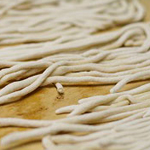 Typical homemade Umbrian pasta with a light taste because they are prepared with only flour and water. This long hand rolled pasta is prepared in different variations and goes well with vegetables, black truffle, and fresh tomato (“Spoleto”) based sauces. Terni’s variation is called “ciriole” pasta which has the same preparation, but is cut into thin squares.
Typical homemade Umbrian pasta with a light taste because they are prepared with only flour and water. This long hand rolled pasta is prepared in different variations and goes well with vegetables, black truffle, and fresh tomato (“Spoleto”) based sauces. Terni’s variation is called “ciriole” pasta which has the same preparation, but is cut into thin squares.
Mazzafegati di maiale
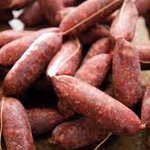 This typical regional sausage is one of the most special and appreciated throughout the region. Its production is achieved with an expert processing of pork and liver mixed together and then stuffed into a natural casing. Mazzafegati are prepared in two ways, a sweet version with the addition of raisins, orange zest, pine nuts and sugar and the other with savory spices, salt and pepper. Between the two versions, the sweet mazzafegati require a short curing period, while the salted version requires a medium-long period of maturation. A product still much appreciated and frequently found at the Umbrian table, enjoyed grilled or spread on toasted bread.
This typical regional sausage is one of the most special and appreciated throughout the region. Its production is achieved with an expert processing of pork and liver mixed together and then stuffed into a natural casing. Mazzafegati are prepared in two ways, a sweet version with the addition of raisins, orange zest, pine nuts and sugar and the other with savory spices, salt and pepper. Between the two versions, the sweet mazzafegati require a short curing period, while the salted version requires a medium-long period of maturation. A product still much appreciated and frequently found at the Umbrian table, enjoyed grilled or spread on toasted bread.
Fava Cottora di Amelia
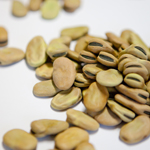 A delicious legume small in size but big in taste, typical of Amerino. Enjoyable in many ways, with extra virgin olive oil, salt, pepper and fresh onion bruschetta or as a pate made from crushed beans, extra virgin olive oil and fennel. Also popular is the “striscia con le fave” in this case the fava beans are boiled and seasoned with fat obtained from the dissolution of the cooking fat and low-fat obtained from the ventral part of the pig.
A delicious legume small in size but big in taste, typical of Amerino. Enjoyable in many ways, with extra virgin olive oil, salt, pepper and fresh onion bruschetta or as a pate made from crushed beans, extra virgin olive oil and fennel. Also popular is the “striscia con le fave” in this case the fava beans are boiled and seasoned with fat obtained from the dissolution of the cooking fat and low-fat obtained from the ventral part of the pig.
Fichi “Girotti” di Amelia
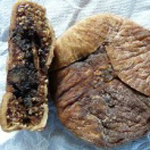 Local delicacy of Amerino and Amelia with ancient origins. The figs are dried before being opened and filled with walnuts, almonds, candied fruit and cocoa. The result obtained is a dry fruit with a sweet and unmistakable taste.
Local delicacy of Amerino and Amelia with ancient origins. The figs are dried before being opened and filled with walnuts, almonds, candied fruit and cocoa. The result obtained is a dry fruit with a sweet and unmistakable taste.
Lumachelle Orvietane
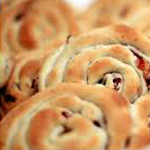 This bakery product owes its name to its particular form that resembles a snail. A typical product of Orvieto perfect to be eaten as an appetizer or snack. The lumachella dough after cooking retains a golden color and a pleasant taste enhanced by the black pepper, cheese and diced bacon or ham which are nixed into the dough.
This bakery product owes its name to its particular form that resembles a snail. A typical product of Orvieto perfect to be eaten as an appetizer or snack. The lumachella dough after cooking retains a golden color and a pleasant taste enhanced by the black pepper, cheese and diced bacon or ham which are nixed into the dough.
Pane di Terni
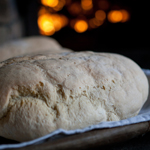 Also called “pane sciapo” (unsalted bread) it is characterized by the minimal amount of salt in the dough, so small as to be hardly perceptible to taste. Unsalted bread is widespread throughout the region and is baked in a wood oven. Loaf shaped with a crispy crust and soft interior. Thanks to it being “bland” it is the perfect accompaniment to savory dishes and regional cold cuts.
Also called “pane sciapo” (unsalted bread) it is characterized by the minimal amount of salt in the dough, so small as to be hardly perceptible to taste. Unsalted bread is widespread throughout the region and is baked in a wood oven. Loaf shaped with a crispy crust and soft interior. Thanks to it being “bland” it is the perfect accompaniment to savory dishes and regional cold cuts.
PRODUCERS AND FOOD SHOPS
TYPICAL DISHES
Appetizers & Snacks
- Bruschetta con olio di oliva: simple dish made with fire toasted bread and seasoned with a hint of garlic and extra virgin olive oil.
- Crostino di fegato: thin sliced bread with pate made from liver and vinegar.
- Lumachelle: a typical bakery product of Orvieto where the dough is seasoned with pepper and bacon.
- Biscotto salato all’anice: other bakery product where the dough is boiled and then baking in the oven.
- Pizza di Pasqua al formaggio: bakery product of the Easter period, in the savory version the dough has pepper and pieces of cheese, the sweet version the dough is flavored with cinnamon, sugar and almond liqueur.
First Courses
- Umbrichelli (ciriole) al tartufo nero: hand-made and hand rolled pasta of flour and water (in the Terni’s ciriole version they are squarer shaped), topped with black truffle and olive oil.
- Tagliatelle con rigagli di pollo: hand-made pasta cut thick and thin, this recipe is served with tomato sauce and chicken giblets, for a rich flavor.
- Zuppa di ceci e castagne: a typical autumn soup with chickpeas and chestnuts.
Second Courses
- Pollo alla cacciatora: chicken cooked in a skillet with rosemary, garlic and fresh tomatoes.
- Coniglio a porchetta: a typical dish of rabbit cooked in the oven stuffed with spices and wild fennel.
- Porchetta di maiale: a whole wood oven roasted pig spiced with wild fennel and fresh black pepper.
- Palomba o piccione alla leccarda: an old recipe of Amerino and later Orvieto, which involves cooking dove on a spit, flavored with essences harvested in the drip pan.
- “Tordomatto”: pork tenderloin roasted with aromas of bay leaf and pepper.
- Mazzafegati di maiale: pork stuffed similar to sausage but with liver, spices and orange peal (in the sweet version raisins are added).
Side Dishes
- Parmigiana di gobbi: a variation of eggplant parmigiana using gobbo (cardoon of the artichoke).
- Bandiera: a mix of peppers, carrots, onions and eggplant.
- Fava Cottora di Amelia: fava beans prepared and sauteed with fennel and bacon fat.
Desserts
- Frittelle di San Giuseppe: fried rice ball with cinnamon
- Castagnole: dolce di carnevale tipico con miele
- Maccheroni dolci: pasta condita con cacao, cannella e noci
- Mostaccioli: dolci fatti con il mosto di vino
- Pampepato (Terni): dolce a base di cacao e pepe
RESTAURANTS AND TRATTORIAS
Restaurants Orvieto and the Amerini Hills
Trattorias, restaurants, wine bars along the western side of Umbria; Orvieto and Amelia. Local restaurants offering traditional dishes and recipes with ingredients closely tied to local production. Some of the most typical dishes: ciriole and umbrichelli al tartufo (truffle), piccione alla leccarda (dove), lumachelle, zuppa di ceci (chickpea soup), coniglio (rabbit) a porchetta, pampepato.
EXPERIENCES
LOCAL EVENTS & FESTIVALS
Orvieto
- Orvieto con Gusto
- Risate e Risotti
- Umbria Jazz (Winter)
- I Gelati d’Italia
Terni
- Sagra della ciriola – (località Campitello)
Fabro
- Mostra mercato Tartufo
Stroncone
- Sagra della ciriola copparola
Corbara
- Sagra dell’Oca
Cerreto di Baschi
- Sagra della Focaccia
Amelia
- Sagra della Fregnaccia – (località Montecampano)
- Sagra della Fava Cottora e del Cinghiale – (località Collicello)
Montecchio
- Sagra del Cinghiale
Guardea
- Sagra degli Gnocchi
Dunarobba
- Sagra della Lepre
San Liberato di Narni
- Sagra del Porchetto
Ferentillo
- Sagra del Cinghiale
Alviano
- Sagra del Cinghiale

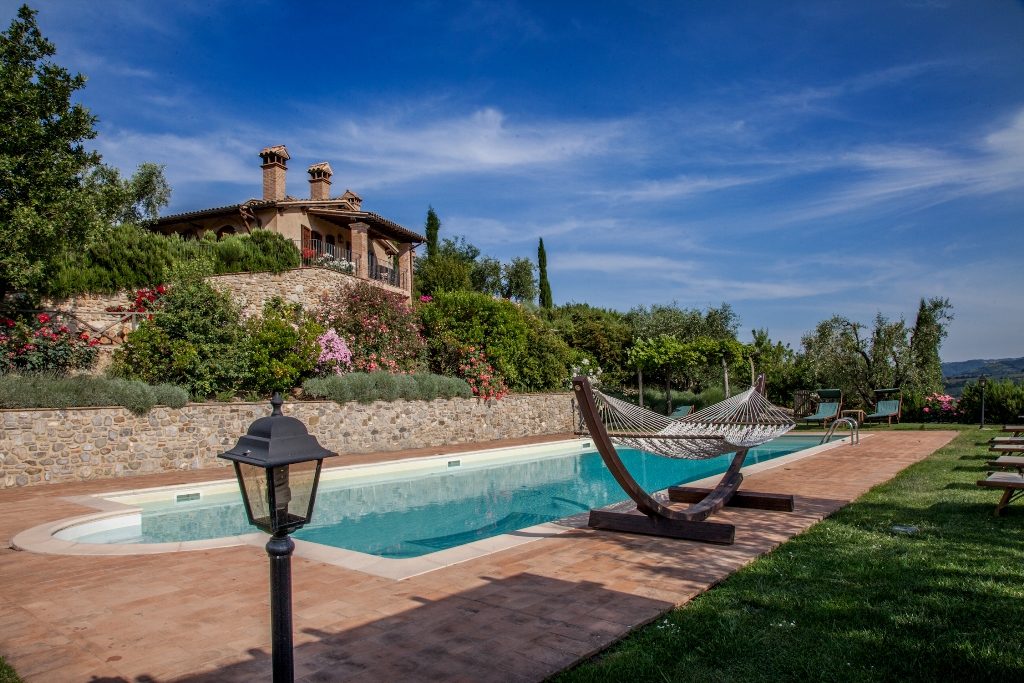

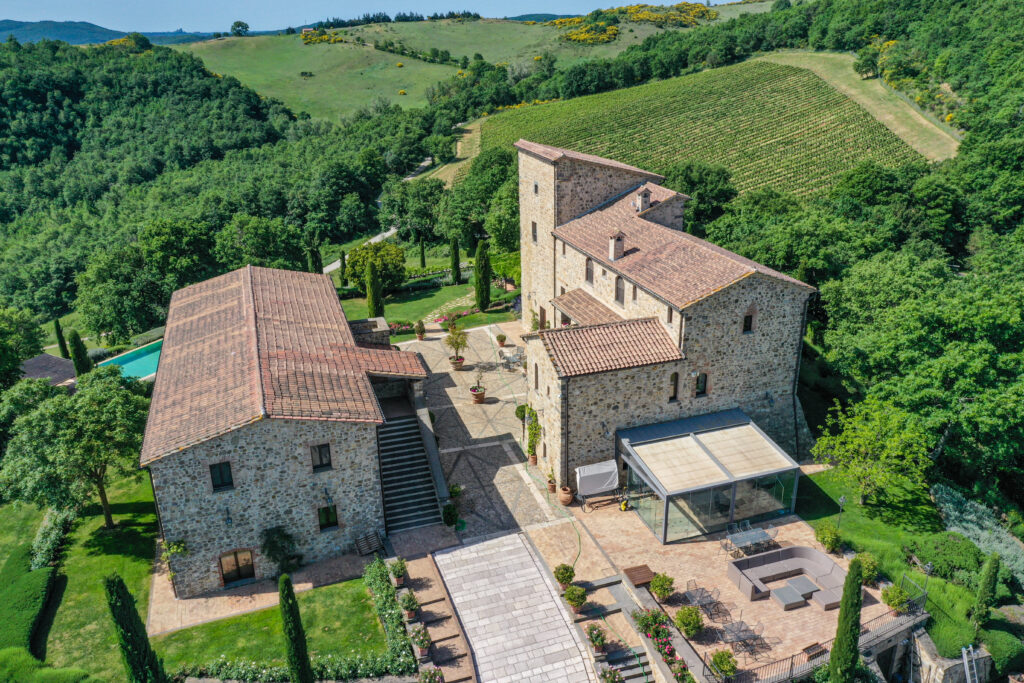

 ,
,  ,
,  ,
, 
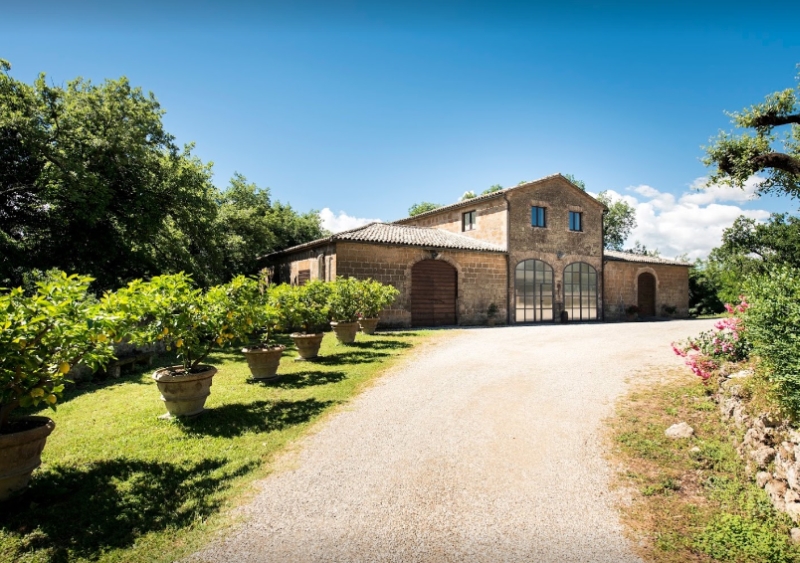
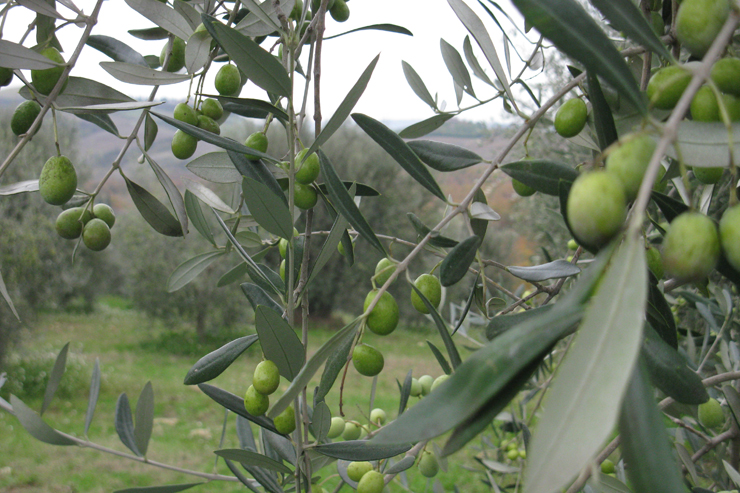
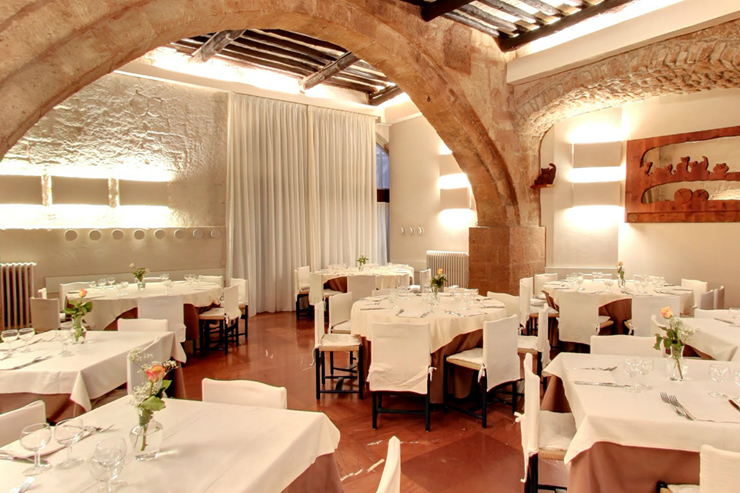
 ,
, 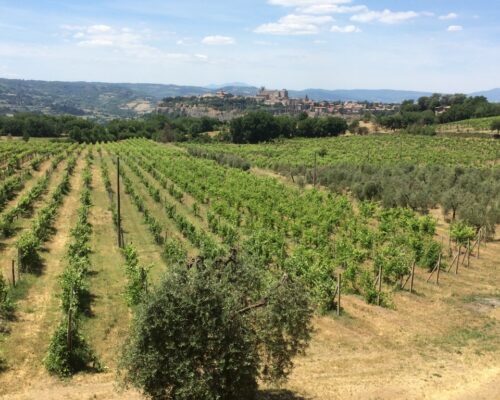
 Beer Production
Beer Production